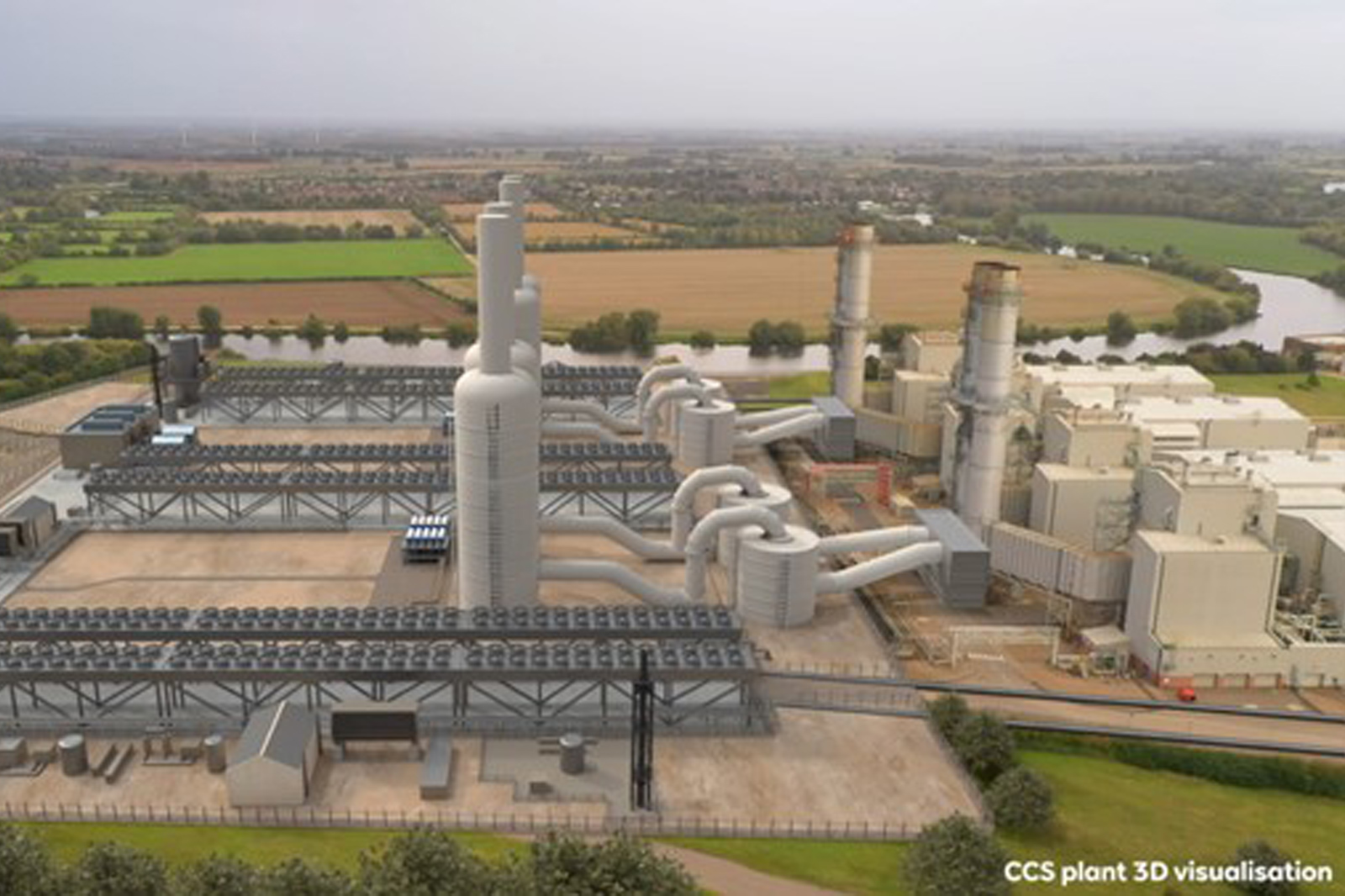RWE to build its largest battery energy storage facility in the UK
01.12.2025

RWE, the UK’s leading electricity generator and operator of the country’s largest fleet of gas fired power stations has launched a major new video giving a fascinating insight into how carbon capture will work at its existing Staythorpe Power Station.
Staythorpe is one of three carbon capture and storage (CCS) projects that RWE announced it is developing earlier this year. Once fully operational, the projects will provide valuable solutions to the delivery of decarbonised, reliable, and dispatchable power generation, in support of the UK’s target of decarbonising its power system by 2035.
RWE has been developing projects to retrofit carbon capture technology at its existing combined cycle gas power stations at Pembroke and Staythorpe, in addition to the development of a new combined cycle gas turbine (CCGT) generating plant with carbon capture at Stallingborough, located close to the Humber Estuary.
Staythorpe Power Station, a 1.7 gigawatts (GW) combined cycle gas turbine (CCGT) power plant, near Newark, has now completed feasibility studies for its proposed CCS plant, and will shortly be moving ahead with procurement of its FEED study (front end engineering design). Stallingborough, a potential new 900 megawatt (MW) combined cycle gas turbine (CCGT) generating plant with carbon capture has completed environmental and feasibility studies ahead of an initial consultation planned for February 2024. Pembroke’s proposed 2.2 gigawatts (GW) CCS plant has completed feasibility studies ahead of taking the next steps toward its FEED study.
The new 3D animated video aims to bring to life RWE’s carbon capture vision, plans, and the benefits of the carbon capture plant at Staythorpe (see the video here). Through the movie, viewers can see why CCS is important in the UK energy mix, how the technology works and what a potential plant could look like.
If all three projects are progressed, together they would be capable of securing up to 4.7 GW of flexible, decarbonised generation capacity – enough to produce electricity that would power the equivalent of 8.1 million typical UK homes, while capturing 11 million tonnes of CO2 per year – equal to removing 2.2 million petrol cars from the road.
Fiona Auty, Head of Energy Transition RWE Generation, commented: “Since we launched our carbon capture projects earlier in the year our teams have been rapidly progressing environmental and technical studies ahead of the next Government Cluster sequencing programme. These three projects represent an important step towards decarbonising our existing UK gas plants; they will play a key role in helping RWE achieve its global ambition to be carbon neutral by 2040, in addition to providing significant support to the UK’s long term energy security.”
All three projects are close to proposed CO2 networks or will have access to shipping facilities, which would enable the CO2 to be safely transported and stored by third parties. RWE has developed partnerships with industrial clusters South Wales Industrial Cluster (SWIC) and Viking CCS in order to develop these transportation and storage options. Viking CCS was successful in the most recent stage of the Government contract award process and was awarded track 2 status.
RWE looks forward to further Government Cluster Sequencing for Carbon Capture Usage and Storage Deployment announcements in the near future. Further information about RWE’s UK decarbonisation projects is available here.